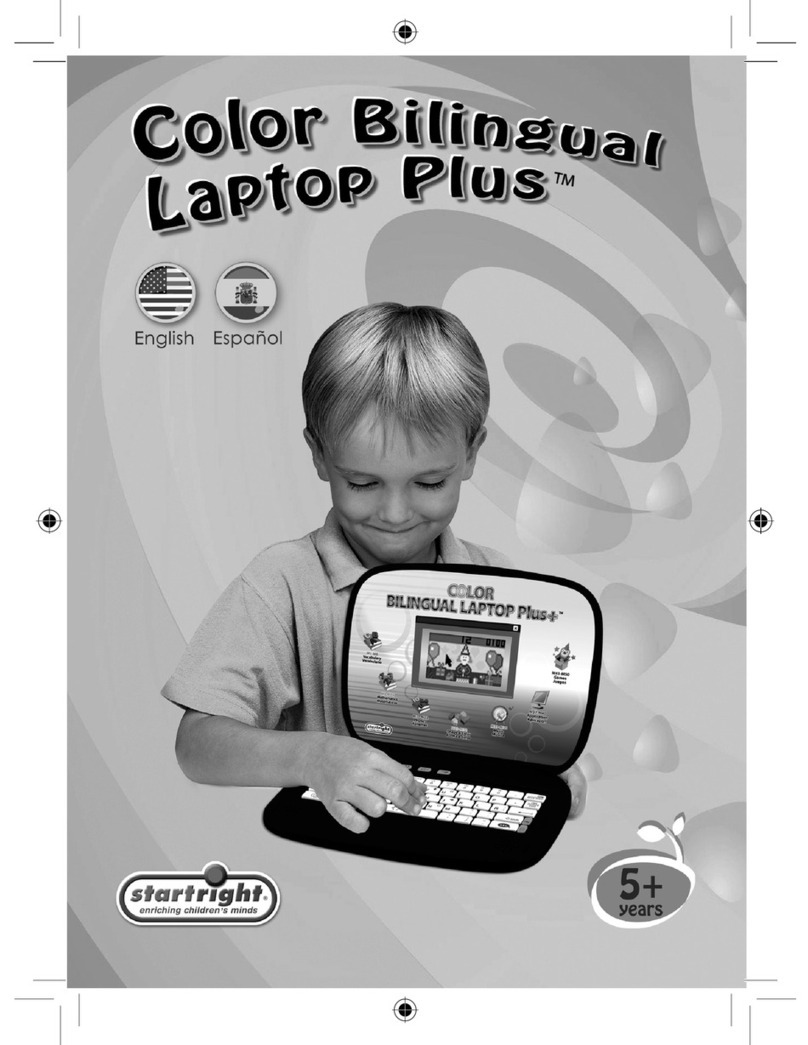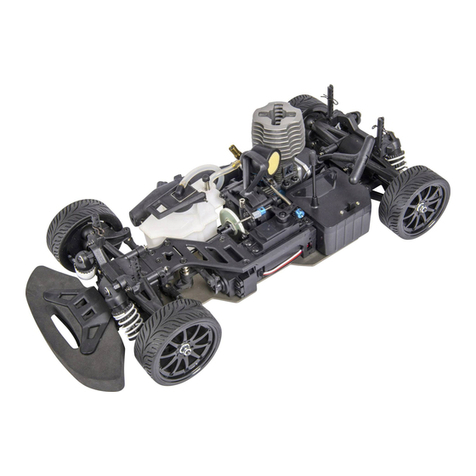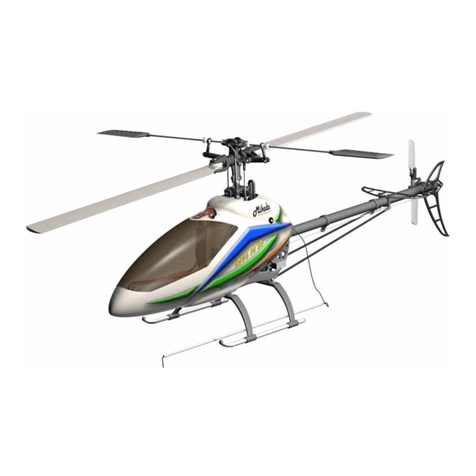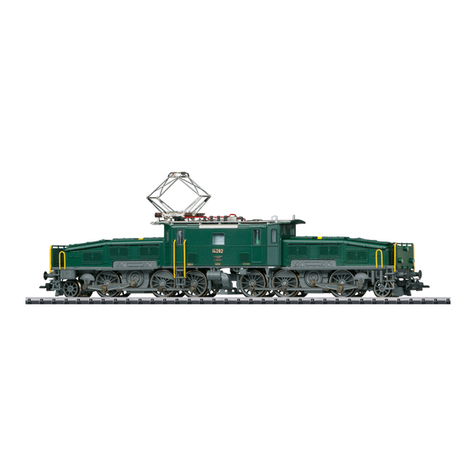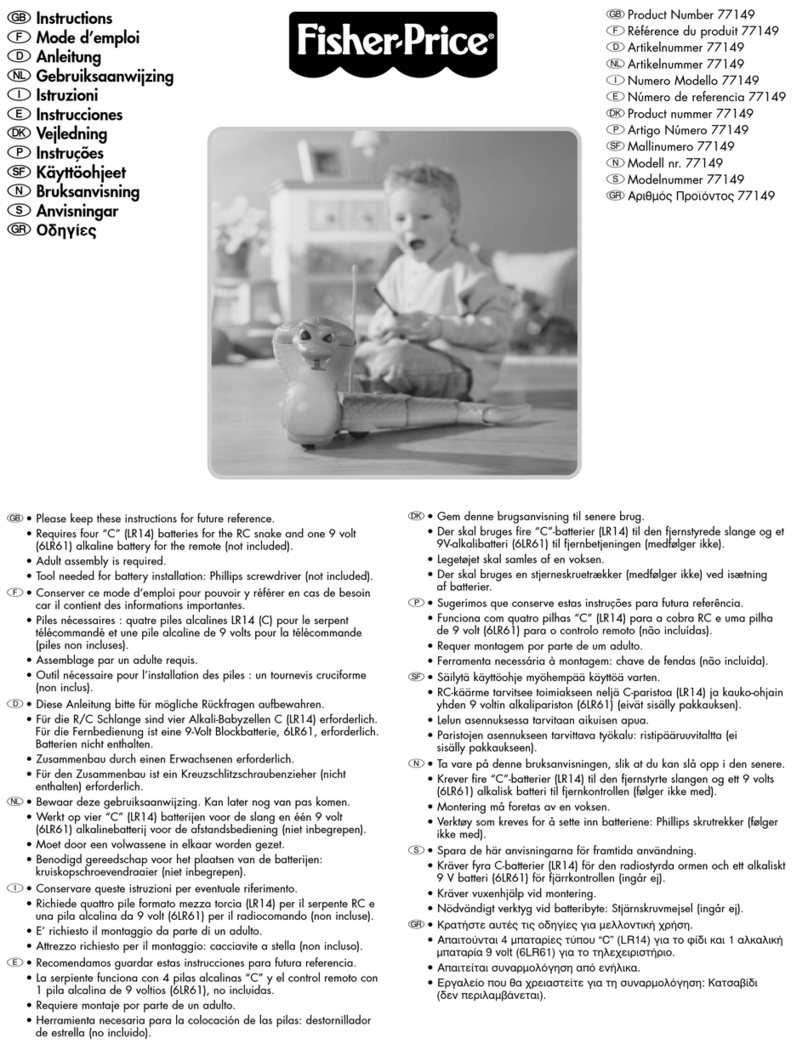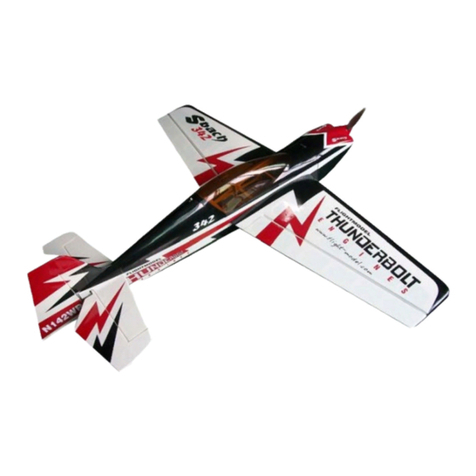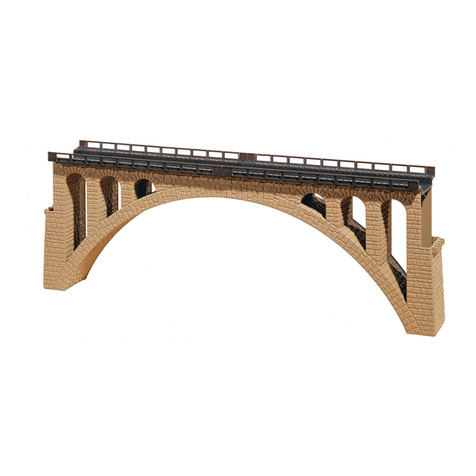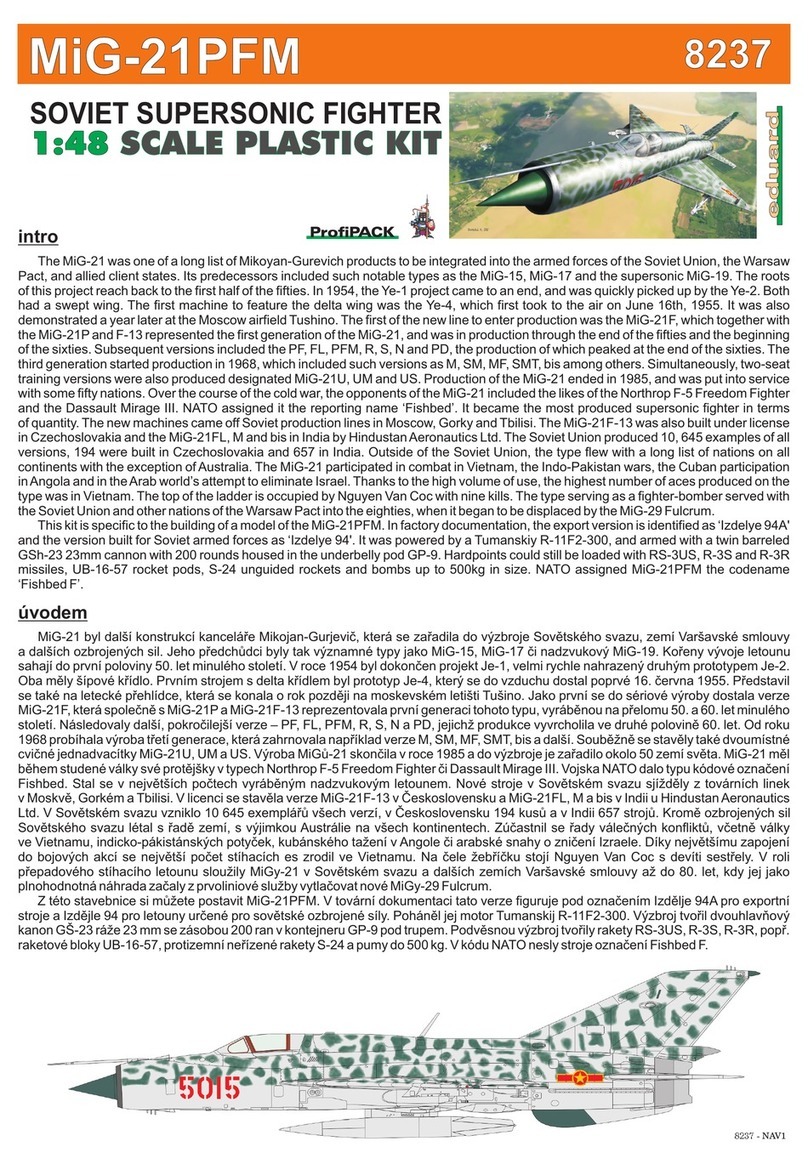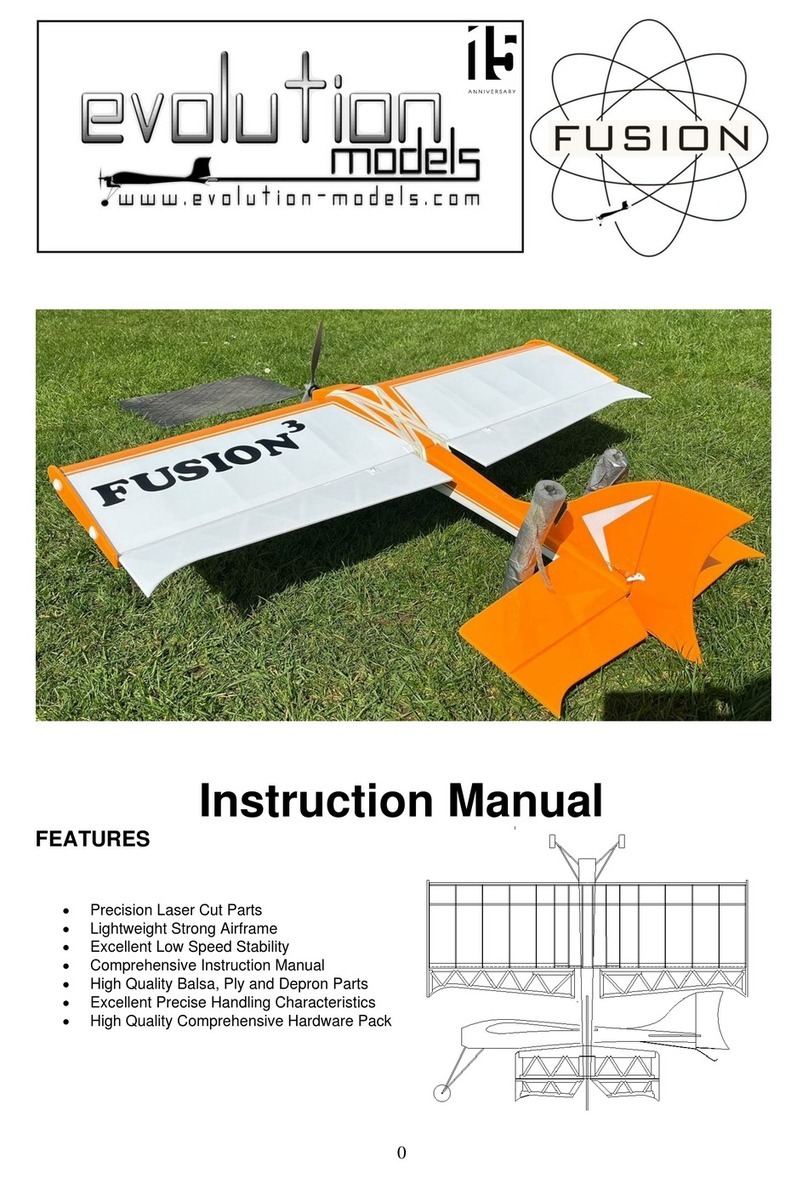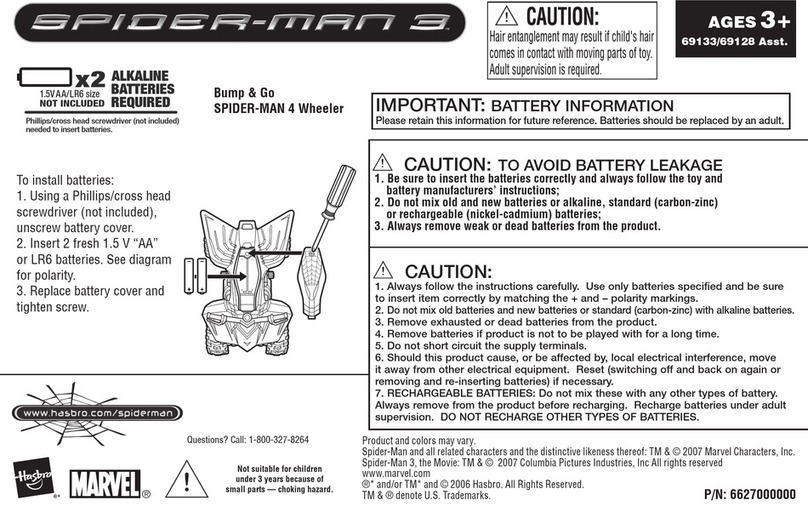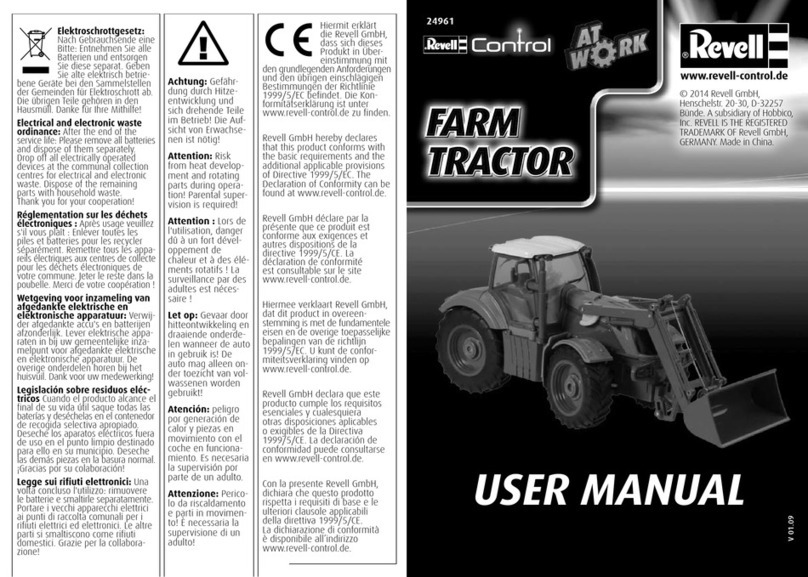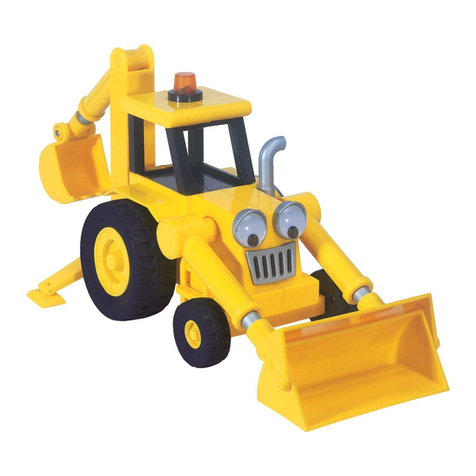Beechcfaft D9*5A User manual


A
LIST
OF
EFFECTIVE
PAGES
TOTAL
NUMBER
OF
PAGES
IN
11i
IS
BOOK
IS
132
*Tide
*List
of
Effective
Pages
i through vi
*I-9 through I-IOB
1-ll
through
J-2I
2-1 through 2-2
*2-3 through 2-4A
3-1 through 3-6
4-1 through 4-2
*4-3 through 4-4
4-5 through
4-I8
5-1
through 5-13
6-I
through 6-23
7-1 through 7-4
*7-5 through 7-6A
7-7 through 7-9
*7-10
7-11 through 7-15
*7-16
7-17 through 7-30
AI
AI
Al
AI
AI
Al
A1
Al
August
3,
1964
August
3,
1964
Original
August
3,
1964
Original
Original
August
3,
1964
Original
Original
August
3,
1964
Original
Original
Original
Original
August
3,
1964
Original
August
3, 1964
Original
August
3,
1964
Original
*The asterisk indicates pages revised, added
or
deleted
br
the current revision.
Revised
August 3, 1964

THANK YOU
...
for displaying confidence in
us
by
selecting a BEECHCRAFT airplane. Our
design engineers, assemblers and inspectors have utilized their skills and years
of experience
to
ensure
that
the
new BEECHCRAFT meets the high
standards
of
quality and performance for which BEECHCRAFT airplanes
have become famous
throughout
the
world.
IMPORTANT NOTICE
This manual should be read carefully
in
order
to
become familiar with
the
operation
of
the
airplane. Suggestions and recommendations have been made
within it
to
aid
in
obtaining maximum performance
without
sacrificing
economy.
Be
familiar with and operate the airplane
in
accordance with
the
Owner's Manual and FAA Approved Airplane Flight Manual
and/or
placards
which are located in
the
airplane.
As
a further reminder,
the
owner and operator should also be familiar with
the
Federal
Aviation
Regulations applicable
to
the
operation and
maintenance
of
the
airplane, and FAR Part
91
General Operating and Flight
Rules. Further,
the
airplane
must
be operated and maintained in accordance
with FAA Airworthiness Directives which may be issued against it.
The Federal Aviation Regulations place
the
responsibility for the
maintenance
of
this airplane on
the
owner and
the
operator,
who
should
make certain
that
all
maintenance
is
done by qualified mechanics
in
conformity with all airworthiness requirements established for this airplane.
All
limits,
procedures,
safety practices, time limits, servicing, and
ma
i
ntena
nee
requirements contained
in
this manual are considered
mandatory for continued airworthiness
to
maintain
the
airplane
in
a
condition equal
to
that
of
its original manufacture.
Authorized BEECHCRAFT Parts and Service Outlets
will
have recommended
modification, service, and operating procedures issued by both FAA and
Beech Aircraft Corporation, which are designed
to
get maximum utility and
safety from
the
airplane.

Table
ol
Contents
SECTION I
Descriptive
Information
____________
}.}
lCF>
SECTION
II
Operating
Check
Lists ----------------2-l
'SF>
SECTION
III
Performance
Specifications
and
Limitations
--------------------------3-l
SECTION
IV
Flying
Your
BEECHCRAFT
......4-1 lSE>
SECTION V
Unusual
Operating
Conditions
....
5-l
'ETt•
SECTION
VI
Operational
Data
----------·······-···---6·1
SECTION
VII
Servicing
and
Maintenance
........
7-l
iii

G@n@ral
Sp@cilications
ENGINES
Two
Lycoming, 4-cylinder, I0-360-B1B, rated
ot
180
hp
@l
2700 rpm
for
all
operations.
PERfORMANCE-
TRUE
AIRSPEED,
STANDARD
ALTITUDE
MAXIMUM
CRUISING
SPEED:
{a),
at
75%
power
{2450 rpm)
........................
200
mph/174
kts
at7500
ft.
{b)
at
65%
power
(2450 rpm)
.........................
195
mph/169
kts
ot
11,000 ft.
HIGH
SPEED
AT
SEA
LEVEL
(2700
rpm,
full throttle)
..............................
210
mph/182
kts
RATE
OF
CLIMB AT
SEA
LEVEL
{rated power)
Two
engines
•..•...•••••.••••.••.••..••••••.•..•••.•
1250 fpm
One engine
•.•.....•.......••••.•••.•••••••••••••••
205 fpm
SERVICE
CEILING {rated power)
@l
4200 pounds
Two engines {100 fpm)
..............................
18,100ft.
One engine {50 fpm)
..••••••....••..••.••••••.••••••
4400
fl.
ABSOLUTE
CEILING
@l
4200 pounds
Two engines
.....•..•..•.....•.•...•.••••••.••••.•••
19,800
ft.
Single engine (descending to level out at)
.•.••••..•••••
5850
fl.
STALLING
SPEED
{Zero Thrust), Flaps
28°,
Gear Down
•.•••.
70
mph/61
kts
MAXIMUM
RANGE
@l
165
mph/143
kts
.•.••..•..•••••••..
1170miles on 112 gal.•
ENDURANCE
.•.••.•••..•••••••..•.•••...•.•••..•••..•
7.54 hours•
TAKE-OFF
DISTANCE-
{20° flap) Ground
Run
............
1000 ft.
••
Total Distance over 50
ft
.............................
1280 ft.
..
LANDING
DISTANCE-
(28• flap) Ground
Run
•.•...••..••
980ft.
• •
Total Distance over 50
ft
.............................
1590 ft.
••
The above performance figures are the results
of
flight
tests
of
the Travel
Air
conducted
by
Beech
Aircraft
Corporation under factory-controlled conditions
and
will
vary
with
individual
aircraft
and numerous factors affecting
flight
performance.
*Includes warm-up, taxi, lake-off, climb
and
45 minutes
holding
at
45%
MC power.
• *Take-off and
landing
performance based on
Sea
Level Standard Conditions.
TYPE
Four
or
five-place, high-performance, all-metal,
low-wing,
twin-engine cantilever
monoplane, with
fully
retractable tricycle
landing
gear, solid cabin
top,
and
full
complement
of
engine
and
flight
instruments standard.
BAGGAGE
Maximum 400
pounds-
rear
270 pounds
less
equipment-
front
WEIGHTS
Gross
Weight
.••••••••.•••••.••••••••••.••••••••••••••
4200 lbs.
Empty
Weight,
Dry {Approx.)
•....•••.•••••.•••......••••
2555 lbs.
(Empty
weight
includes complete set
of
flight
instruments1 cabin heating and venti-
iv

lating system with windshield defrosters; soundproofing;
navigation,
cabin,
instrument
and
landing
lights.)
Useful
load
(Approx.)
........•.••...........•••..••••.•
16451bs.
WING
AREA
AND LOADINGS
Wing
Area
.....••...............•................•..•
199.2 sq. ft.
Wing
loading,
at
gross
weight
..•...•.•..••.............
20.6
lb>.lsq.
fl.
Power Loading,
at
gross
weight
.........•••..............
11.4
lbs./
hp
DIMENSIONS
Wing
Span
.......•.•....••.......•.••....••••........
37ft.
10 in.
length
....................•..........................
25
fl.
11
in.
Height
........•......•••.........•.......•...........
9 ft. 6 in.
CABIN DIMENSIONS
Cabin
length
......................••...•.............
8
fl.
6 in.
Cabin
Width
..•..........•.....•.•.•..•..•••.••.•....
3 ft. 6 in.
Cabin
Height
.................•.......•...••...••.....
4ft.
2 in.
Passenger
Door size
...•••..•...••.••..•••.....••....•.
36
in. x
37
in.
Baggage
Door size,
rear
•....•.......•..••...•.•...•••.
18.5 in. x 22.5 in.
Baggage
Compartment size,
rear
......•..................
33.5 cubic ft.
Baggage
Compartment size, front . . . . . . . . . • • . .
...••...•.
12 cubic fl.
Accessory Shelf, nose cone
.•...•••••••...•...•.••....•.
7 cubic ft.
PROPELLER
AND EQUIPMENT
Propeller-
constant
speed,
full
feathering,
diameter
72",
with hydraulic governor.
ENGINE EQUIPMENT !Per Engine)
Starter
Generator
Voltage Regulator
Auxiliary
fuel
Pump
Induction Air Filler
Exhaust Manifolds (stainless >!eel)
Vacuum Pump
FUEL
AND
OIL
CAPACITY
fuel
Capacity
in
standard
wing tanks
......•.•••..••••...
80
gal.(usable)
fuel
Capacity with optional
auxiliary
wing tanks
...•.••...•
112
gal.
(usable)
Oil
Capacity
. . . . . . . . . . . • . . . . . . . . . . . . . . . . . . . • . • . . •. . • . • 16
quarts
LANDING
GEAR
Tricycle type with swiveling
steerable
nose wheel
equipped
witn shimmy
dampener.
Beech air-oil struts
on
all wneels
designed
for
smooth
taxiing
and
to wilnstand
the
shock
created
by
landing
with a vertical
descent
component
of
over
600
feet
per
minute. Main tires
7.00"
x
6"
size; nose wheel tire 5.00" x
5"
size. Wheels
Beech with ring-disc hydraulic
brakes.
ELECTRICAL
EQUIPMENT
(24
Volt
System)
One
17-ampere-hour
battery,
standard
(two
24-ampere-hour
batteries,
optional);
electric motors
far
operating
flaps
and
landing
gear;
electrically
operated
cowl flaps
(optional); two 25-am
pere
generators,
standard
(two
40-ampere
generators,
optional).
v

25.94
vi

SECTI01V
I
Descriptive
Information
Your new BEECHCRAFT Travel
Air
is a
four
or
five-place, low wing I
monoplane.
The
all-metal, semimonocoque
airframe
structure is
of
aluminum, magnesium
and
alloy riveted
and
spotwelded
for
•
maximum strength. Careful workmanship
and
inspection make certain
that structural components will withstand flight loads
in
excess
of
the
FAA requirements
for
a
"Normal"
category,
under
which the Model
D95A is licensed.
To develop a good flying technique, you must first have a general
working knowledge
of
the several systems
and
accessories
of
your
aircraft.
Although
they
are
closely interdependent
in
fact, these
systems have been
broken
down
arbitrarily
in
this section
for
ease
of
presentation.
1-1

FLIGHT CONTROLS
Primary
movable control surfaces
of
the Travel
Air
are
operated
through
push-pull rods
and
conventional closed-circuit cable systems
terminating
in
bell cranks.
The
pre-formed, extra-flexible steel cables
run
over phenolic pulleys with sealed
ball
bearings which
ordinarjly
require
no
lubrication
and
insure smooth, free action
and
long
cable
life.
Standard
equipment provides a throw-over type control wheel
arm
for elevator
and
aileron control which may
be
locked in posi-
tion on either the pilot or copilot side
and
pilot's
rudder
pedals
adjustable
fore
and
aft
to fit individual requirements.
The
right
hand
rudder
pedals (optional) rnay be laid flat against the floorboards
when not
in
use.
Trim
tabs on the elevator
and
rudder
control sur-
faces
are
adjustable from the control console through closed-circuit
cable systems which drive jackscrew type actuators. Position indicators
for each
of
the
trim
tabs
are
located
near
the respective controls.
Aileron trim is accomplished by actuating the aileron
trimmer
on
the control column hub.
The
trimmer
displaces the aileron surfaces
themselves to compensate for uneven loading. The displacement
1s
maintained
by
cable loads imposed
by
the aileron trimmer.
Single, slot-type wing flaps
are
operated
through
a system
of
flexible
shafts
and
jackscrew actuators driven
by
a reversible electric
motor
located
under
the front seat. The flap position lights on the left side
of
the control console show green for the up position
and
red
for
the full down
(28°)
landing
position. Intermediate flap positions
of
10°
and
20°,
as
marked on the leading edge
of
the left flap, may
be selected by moving the three position control switch on the left
side of the console to
"OFF"
when the desired flap setting
mark
lines
up with the wing
trailing
edge. Limit switches automatically shut
off the flap motor when the full
up
or
down position is reached.
LANDING GEAR
The
Travel
Air's
extra
strong, electrically operated tricycle
landing
gear incorporates all
of
the advantages provided by this type gear.
The ease
of
ground
operation is assisted
by
the increased visibility,
more positive directional control for
parking
or
operation
under
high
surface wind conditions, decreased stopping distance and longer
brake
and
tire
life;
these
are
but
a few
of
the advantages.
1-2

The
gear
is
operated
through
push-pull
tubes
by
a
reversible
electric
motor
and
actuator
gear
box
under
the
front
seat.
The
motor
is
controlled
by
a two-position
landing
gear
switch
located
on
the
right
hand
side
of
the
control console.
Limit
switches
and
a
dynamic
braking
system
automatically
stop
the
retract
mechanism
when
the
gear
reaches
its
full
up
or
full
down
position.
With
the
landing
gear
in
the
up
position,
the
wheels
are
completely
enclosed
by
fairing
doors
which
are
operated
mechanically
by
the
retraction
and
extension
of
the
gear.
After
the
gear
is
lowered,
the
main
gear
inboard
fairing
doors
automatically
close,
producing
extra
lift
and
reduced
drag
for take-off
and
landing.
Individual
uplocks
actuated
by
the
retraction
system
lock
the
main
gear
positively
in
the
up
position.
No
downlocks
are
necessary
since
the
over-center
pivot
of
the
linkage
forms
a
geometric
positive
lock
when
the
gear
is
fully
extended.
The
linkage
is
also
spring
loaded
to
the
over-center
position.
Landing
gear
position
lights,
located
above
the
landing
gear
switch,
indicate
the
position
of
the
gear,
either
up
or
down,
coming
on
only
when
the
gear
reaches
its
fully
extended
or
retracted
position.
In
addition,
a
mechanical
indicator
beneath
the
control console shows
the
position
of
the
nose
gear
at
all
times.
To
prevent
accidental
gear
retraction
on
the
ground,
a
safety
switch
on
the
left
main
strut
breaks
the
control
circuit
whenever
the
strut
is
compressed
by
the
weight
of
the
airplane
and
completes
the
circuit
so
the
gear
may
be
retracted,
when
the
strut
extends.
Never
rely
on
the
safety
switch
to
keep
the
gear
down
while
taxiing
or
on
take-of}
or
landing
roll.
Always
check
the
position
of
the
switch
handle.
With
the
gear
retracted,
if
either
or
both
throttles
are
retarded
below
an
engine
setting
sufficient to
sustain
flight, a
warning
horn
will
sound
an
intermittent
note.
During
single-engine
operation
the
horn
may
be
silenced
by
advancing
the
throttle
of
the
inoperative
engine
enough
to
open
the
landing
gear
warning
horn
switch.
The
nose wheel assembly is
made
steerable
through
spring
loaded
linkage,
connected
to
the
rudder
pedals
for
greater
maneuverability
during
taxi
operation.
The
retraction
of
the
gear
relieves
the
rudder
pedals
of
their
nose
steering
load
and
centers
the
wheel,
by
a
roller
1-3

and
slot arrangement, to insure
proper
retraction into the wheel well.
A hydraulic dampener
on
the
nose wheel
strut
compensates for the
inherent shimmy tendency
of
a pivoted nose wheel.
Wheels
are
carried
by heat treated
tubular
steel trusses
and
use
Beech air-oil type shock struts. Since the shock struts are filled with
both compressed
air
and
hydraulic fluid, their correct inflation should
be checked
prior
to each flight. Even
brief
taxiing with a deflated
strut
can cause severe damage.
For
manual operation of the landing gear (lowering only) a handcrank
is located behind the front seats. The crank, when engaged, drives the
normal gear actuation system.
Main landing
gear
wheels
are
equipped with BEECHCRAFT ring-disc,
self-adjusting, self-energizing hydraulic brakes actuated by individual
master cylinders connected to the
rudder
pedals
and
operated as toe
brakes.
The
hydraulic
brake
fluid reservoir is accessible from the
forward baggage compartment
and
should be checked occasionally
for specified fluid level.
The
parking
brake
is set
by
a push-pull control
with a center-button lock
and
is located
just
to the left
and
slightly
below the control console. Setting the control does not pressurize the
brake
system,
but
simply closes a valve
in
the lines
so
that
pressure
built
up
by pumping the toe pedals is retained
and
the brakes
remain
set.
Pushing
the control in opens the valve
and
releases the brakes.
POWER PLANTS
Your
Travel
Air
is powered
by
two Lycoming I0-360-BIB engines
rated
at
180 horsepower each,
at
2700 rpm, for take-off
and
maximum
continuous operation.
The
four-cylinder, opposed, aircooled engines
have direct propeller drives
and
a compression ratio of 8.5:I. Pres·
sure
type cowlings
are
used; cooling is controlled by a gill-type flap
on
the
lower trailing edge of each cowling. Fuel distribution is accom-
plished with a constant-flow fuel injection system which incorporates
a special aerated nozzle at the intake
port
of each cylinder. Filtered
induction system
air
is obtained through a filtered airscoop on the
lower front of the engine
and
directed to the
air
throttle valve. A
spring
loaded door
on
the bottom
of
the
air
box opens automatically
if the airscoop is blocked
by
impact ice
or
dirt. Manual controls on
the control console may
he
used to select either filtered
or
alternate
air.
Full dual ignition systems
are
used, with
an
ignition vibrator
1-4

supplying
starting
voltage.
The
electrical system uses Delco-Remy
starters, generators,
and
voltage regulators.
Fuel
injection pumps,
vacuum pumps,
and
constant-speed propellers
are
standard
equip-
ment.
Other
features include sodium-cooled rotator-type valves, chrome
piston
rings
and
a nitrided crankshaft.
Constant-speed, two-bladed, hydraulic, full feathering propellers use
pressure from a feathering
spring
and
centrifugal force
from
the blade
shank
counterweights to increase pitch. oil
under
governor-
boosted pressure decreases pitch.
Propeller
feathering is accomplished by
pulling
the
propeller
control
back past the detent to the
limit
of travel.
Unfeathering
and
restarting
is achieved by moving the propeller control well into the governing
range
and
following the
normal
starting
procedure.
On
airplanes
with the optional unfeathering accumulator, momentary use of the
starter
to initiate rotation is necessary only
at
low airspeeds. lmme-
<Iiately
after
the engine starts, the throttle
and
propeller controls should
be
adjusted
to prevent
an
engine over-speed condition.
Power
Plant
Controls
Propeller,
throttle
and
mixture
control levers, grouped
along
the
upper face
of
the control console,
are
within easy reach of the pilot.
Their
knobs
are
shaped to govern-
ment
standard
configuration so
they may be identified
by
touch.
The levers
are
connected to their
respective units by flexible control
cables routed
through
the
leading
edge of each wing. A control-
lable friction lock on
their
sup-
port
shaft
may be tightened once
power settings
arc
established,
to
prevent creeping. Controls for the
alternate
air
are
hand-operated,
push-pull type with center-button
locks,
and
are
mounted
on
the
lower face
of
the
control console.
1-5

Direct-cranking electric starters
are
relay-controlled
and
are
energized
by
spring
loaded, combination magneto-starter switches, located on
the ignition paneL These
spring
loaded switches
return
to the
"BOTH"
position when released. The push-pull, button-lock type controls
that
operate the engine cowl flaps are located aft of each fuel selector valve
handle. The optional electrically operated cowl flaps
are
controlled
by switches on .the electrical panel located to the left
of
the control
console.
An
indicator light
adja~ent
to the switches comes
on
whenever
the electric cowl flaps
are
not fully closed.
Fuel
System
The
Travel
Air's
fuel system consists
of
a separate, identical supply
for
each engine, interconnected by crossfeed lines
for
emergency use.
During
normal
operation each engine uses its own fuel pumps to
draw
fuel from its respective fuel cell arrangement. However, on
crossfeed operations the entire fuel supply
of
any
or
all cells may
be consumed
by
either engine. A fuel selector valve
for
each engine
controls the cells from which fuel is used.
The
standard
fuel cell arrangement consists
of
one 40-gallon fuel cell
in the inboard portion of each wing leading edge. Total fuel capacity
for
this system is 80 gallons of usable fuel.
With
an optional fuel
cell
arrangement
of one 25-gallon main fuel cell in each wing leading
edge
and
one 31-gallon auxiliary cell
just
aft
and
outboard
of
each
main
cell, the total capacity is raised to
ll2
gallons of usable fuel.
Fuel cannot
transfer
from one cell to another
during
flight.
Fuel quantity is measured by a float-type transmitter unit
in
each
cell, which transmits a signal to the fuel gages on the instrument panel.
When the optional
ll2-gallon
installation is used, a two-position
switch determines the cell, main
or
auxiliary, to which the gage is
connected. Each cell is filled through
its
own filler neck with open-
ings
in
the upper wing
surface
and
sealed with flush-type filler caps.
An
electric auxiliary fuel
pump
for
each engine supplies fuel pressure
for
starting
and
provides for
near
maximum engine performance should
the engine-driven
pump
fail. The auxiliary fuel pumps
are
used
for
starting
and
emergencies,
and
may be used
for
take-off
and
landing.
In
extremely hot weather they should be employed
for
all ground oper-
ations, take-off, climb,
and
landing. Due to the in-line location of the
1-6

-
I
.....
AUXILIARY
ENGINE
SUPPlY
OUTLET
L.
H.
SElECTOR
VAlVE
DRAIN
INLET
I•
TO
ENGINE
•I
ENGINE
SUPPlY
OUTlET
R.
H.
SElECTOR
VALVE
DRAIN
"TT
c:
m
r-
..,..
-<
..,..
......
m
~
..,..
n
:t:
m
~
~
n

auxiliary fuel pumps, between the cells
and
metering unit, fuel
may
be
drawn
from
any
cell within the system
by
the auxiliary
pump
for
the
operating
engine. The fuel system is drained at eight different
locations (including
the
two optional auxiliary cell sumps) as shown
in
the fuel system schematic
and
the servicing
diagram.
Fuel system
strainers
are
located on
the
wing main
spar
in each wheel well
and
at
the inlet to the fuel control units. Regular checking of the strainers
is
of
utmost importance to preventive maintenance, since lowered fuel
pressure may often
be
traced to contaminants clogging the system.
A fuel
flow
indicator
on
the instrument panel is calibrated
in
gallons
per
hour,
based
on system pressure
at
the fuel manifold valve of the fuel
injection unit.
The
instrument also indicates fuel pressure
for
starting.
Oil System
The
engine oil system is
of
the
full-pressure, wet-sump type
and
has
an
8-quart
capacity.
For
safe engine operation, the absolute minimum
amount
of
oil
required
in
the
sump
is 2 quarts. Oil
operating
temperatures
are
controlled by
an
automatic thermostat by-pass control
incorporated
in
the
engine oil passage
of
each system. The automatic
by-pass control will prevent oil flow
through
the cooler when
operating
temperatures
are
below normal.
It
also will by-pass
if
the
radiator
is
blocked. System servicing
and
draining
points
are
shown on the
servicing diagram. The determining factor
for
choosing the correct
grade
of
oil is the oil inlet temperature which is observed
during
flight;
inlet
temperatures consistently
near
the maximum allowable
would indicate a heavier oil is needed.
Straight
petroleum base, aviation
grade, nondetergent oil
of
the
lightest weight
that
will provide
adequate
cooling should
be
used. Certain additive type aviation
grade
oils
are
also
approved
by
the engine manufacturer,
but
they should
be
used with
caution. (See servicing information
and
Consumable Materials Chart
in
Section
VII.)
Condensed moisture
in
the oil sump
may
be
drained
by
occasionally opening
the
oil
drain
valve
and
allowing a small amount of
oil to escape; ideally, this
draining
should be done when the engines
have been stopped overnight or approximately 12 hours. This procedure
should
be followed
more
closely
during
cold weather
or
when a
series of
short
flights
of
less
than
30 minutes
duration
have been
made and the engines allowed to cool completely between such flights.
INSTRUMENTS
All flight
and
engine instruments
are
positioned on the instrument panel
1-8

for maximum utility
and
convenience. Instrument markings
are
matte
white on a black background
and
where practicable, the normal oper-
ating
limits
are
indicated.
The
flight instruments
are
located on a hinged floating panel directly
in
front
o£
the pilot's seat.
Standard
flight instrumentation includes atti-
tude
and
directional gyros, airspeed, altimeter, rate-of-climb, electric
turn-and-bank,
and
a clock.
The
airspeed indicator is marked with a
special blue line range
for
single-engine operation. An outside
au
temperature thermometer
and
magnetic compass
are
mounted on the
windshield divider.
The
standard
engine instruments consist
of
the dual manifold pressure
gage
and
individual tachometers with engine
hour
recorders
at
the top
center of the instrument panel, the dual fuel flow indicator on the lower
STANDARD EQUIPMENT OPTIONAL EQUIPMENT
1.
Clock
2.
Airspeed
Indicator
3. Turn-and-Bank
Indicator
4.
Attitude
Gyro
5.
Directional
Gyro
6.
Altimeter
7. Vertical Speed
Indicator
8. Tachometer
9. Fuel
Quantity
Gages
10.
Magnetic
Compass
11. Dual
Manifold
Pressure
Gage
Revised August 3, 1964
12. Dual Fuel Flow
Indicator
13. Ammeters
14. Suction
Gage
15. Dual
Oil
Pressure
Gage
16. Dual
Cylinder
Head
Temperature
Gage
17. Dual
Oil
Temperature
Gage
18. Landing
Gear
Position Switch
19. Flap Position Switch
20. Electrical Panel
21.
Ignition
Panel
and
Generator
or
Alternator
Switches
A. ADF
Indicator
B.
Dual Tachometer
C.
Propeller
Anti-
leer Fluid
Gage
D.
VOR
Indicator
E.
VOR
Indicator
with
Glide
Slope
F.
DME
Indicator
G.
DME
Control
1-9

left
hand
side
of
the panel,
and
the
dual
oil temperature, oil pressure,
and
cylinder
head
temperature gages plus a suction gage on the
right
hand
side of the panel. When the optional dual tachometer is installed,
the fuel flow indicator is mounted
adjacent
to
the manifold pressure
gage in the top center portion of the panel. Fuel
quantity
is
shown by
two separate gages, each gage serving both the
standard
and
the optional
fuel
tank
in each wing.
The
gages·
are
mounted with the ammeters
just
above the control console.
Impact
air
pressure and atmospheric
air
pressure
for
the airspeed
indicator, ;dtimeter,
and
vertical speed
indicator
are
supplied
by
the
pitot
and
static
air
systems. Since the accuracy
of
these instruments
depends
on
accurate pickup
of
the two pressures, the systems have
been developed carefully
and
tested in flight with highly accurate
special equipment. To insure the
proper
operation
of
these instru-
ments,
drain
the
systems
regularly
and
keep the static
ports
clear
of obstructions.
ELECTRICAL SYSTEM
The Travel
Air's
direct-current electrical power system uses either, one
17-ampere-hour 24-volt battery,
or
two 25-ampere-hour 12-volt batteries,
in
any
standard
or
optional combination with two 25-ampere 12-volt
generators,
or
two 50-ampere
alternator
rectifiers.
Either
battery
in-
stallation is mounted
in
the lower portion of
the
nose section;
both
generator installations
are
belt driven from the engine crankshaft.
In
general,
the
aircraft's
circuitry
is the single-wire, ground-return type
with
the
aircraft
structure itself
being
used as the
ground
return.
On
the
standard
generator installation, each generator's electrical out-put
is automatically controlled
by
its respective voltage regulator
and
the
system's common generator paralleling relay. This paralleling relay
equalizes the out-put
or
load for each generator. The system electrical
reading
is then indicated on the direct
reading
type (not the charge-
diseharge type) ammeters located on the instrument panel
just
above
the
control console. These ammeters indicate individual generator
out-put
and
also serve as system load-meters, i.e.,
an
ammeter indication will
increase
or
decrease
in
direct proportion to the electrical load applied.
On
the optional,
or
alternator
installation,
both
alternators
are
con-
trolled
by
two fully transistorized electronic voltage regulators, however,
1-10
Revised
August
3,
1964

only one.
regulator
is
operable
in
the
system
at
a
time;
the
remammg
regulator
being
used as
an
alternate
or
standby.
Either
of
these regu-
lators
when
switched
into
the
circuit
will
automatically
adjust
alternator
out-put to
the
required
electrical load,
including
battery
recharging.
These
electronic voltage
regulators
provide
usable
current
out-put
at
low
engine
rpm.
Each
alternator
will
produce
approximately
20
amperes
at
1100
engine
rpm.
Selection
of
a
regulator
is
made
by
a
select
switch
placarded
l
and
2, located
on
the
ignition
switch
panel.
System
protection
against
overvoltage is
provided
by
an
overvoltage
relay
which
disconnects
the
alternators
from
the
aircraft
bus
should
an
overvoltage
condition
occur. A press-to-test overvoltage
warning
light
located on
the
instrument
panel
illuminates
whenever
the
alter-
nator
is
disconnected
from
the
aircraft
bus
by
the
overvoltag·e relay.
Should
an
overvoltage
condition
occur
(illumination
of
overvoltage
warning
light),
switch
to
the
standby
voltage
regulator,
either
l
or
2 as
necessary.
Should
the
condition
persist, pull
the
alternator
field
circuit
breaker
(
5-ampere)
and
correct
the
discrepancy
prior
to
the
next
flight.
Illumination
of
this
light
provides
a
warning
that
electrical
current
consumption
should
be
minimized
since only
battery
power
is
available
with
the
alternators
shut-off.
The
circuit
is also designed so
that
the
alternators
are
automatically
shutoff
whenever
the
battery
master
switch
is
OFF.
CAUTION
To
protect
the
alternators
from
overheating,
do
not
use
more
than
45
amperes
from
either
alternator
while
operating
on
the
ground
at
temperatures
above
100°
F
(38°
C)
or
in
flight
at
altitudes
above
14,000 feet
with
outside
air
temperature
above
45°
F
(70°
C).
A
panel
containing
the
magneto,
starter,
battery,
and
generator
switches
is located below
the
pilot's
storm
window.
On
aircraft
equipped
with
alternator
generators,
this panel is modified
by
replacing
the
generator
switches
with
alternator
control switches
and
the
addition
of a
regulator
l
and
2
switch
and
a
5-ampere
alternator
field
circuit
breaker.
Placards
indicate
the
particular
circuit
controlled
by
the
electrical switches
and
individual
circuit
breakers
in
the
panel
to
the
left
of
the
control com-ole.
Refer
to
Section
VII
for
alternator
servicing
and
maintenance
in-
formation.
Revised
August
3,
1964
1-lOA
Table of contents


